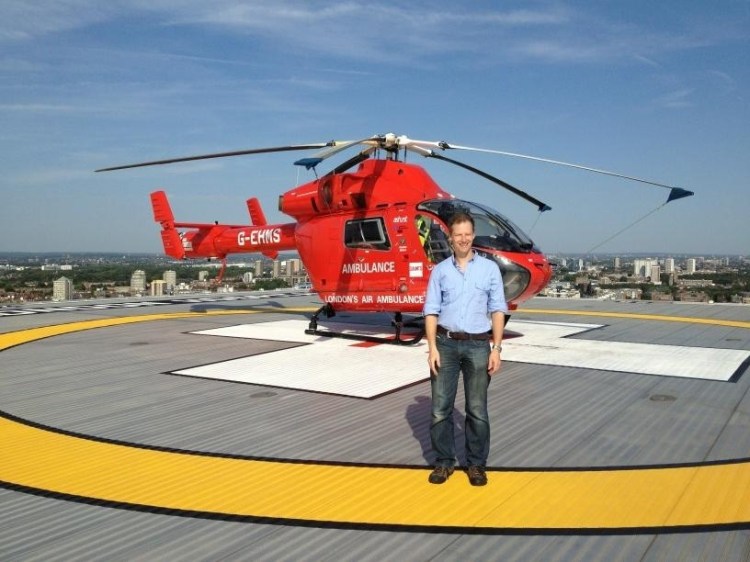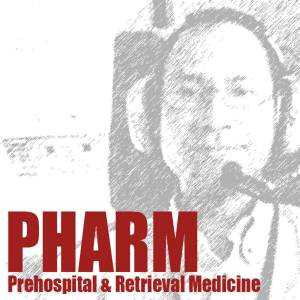
Dr Karel Habig and some of his colleagues sent me a response to the HIRT trial post that I reblogged from the Careflight Collective blog. Here it is :
Hi CF Collective,
Thank you for the opportunity to reply to your posts surrounding prehospital care in greater Sydney.
The following represents our personal view.Prehospital research is a huge challenge but in our opinion the HIRT study question, study methodology and setting were crucially flawed. This resulted in a study which took almost 6 years but failed to recruit enough patients to definitively answer the question it posed.
The Study Question.
Rather than test the effect of a specific intervention or bundle of interventions the study intervention described in the HIRT paper was ‘standard treatment plus a physician arriving by helicopter’. Prehospital & retrieval medicine (PHARM) has evolved well beyond the assumption of physician superiority. The international PHARM community, supported by an expanding literature, acknowledges the necessity of prehospital critical care delivered by teams who have received a structured and ongoing training program, applying interventions and monitoring according to clear standard operating procedures, and whose safety and quality is assured through an open and robust clinical governance framework. No mention of specific training is given, no clinical operating procedures were available in the public domain during the term of the study, and worryingly the only standard of care mentioned is “protocols for standard trauma therapy as determined by the Royal Australasian College of Surgeons Early Management of Severe Trauma programme”, a 2.5 day ATLS-equivalent course for junior staff devoid of prehospital training.Without specific operating procedures or protocols the trial could never be replicated: an essential component of the scientific method. Without a multicentre design any outcome would inevitably lack external validity. Were there a specific set of operating procedures these operating procedures needed to have been at the core of this study.
Methodology
The second major issue was the study methodology. In a reversal of sound RCT methodology patients were randomised at the time of tasking (or self-tasking by HIRT) then eligibility criteria were applied resulting in data on very few patients being analysed (≈10%). Patients were excluded for a variety of reasons some of which were likely to be non-random. This intrinsically limited the statistical validity of any result whether the trial had recruited fully or not.
If one had to point to the single biggest failure it was clearly recruitment with not enough patients recruited despite 5yr and 10mths elapsing in a study designed to last 3yrs. This became clear to the investigators early on and led to change of inclusion criteria while the study was underway.Why did the study fail to recruit?
A significant factor was the choice of setting, Sydney NSW. Sydney has 6 major trauma centres in the metropolitan area which limits the number of patients who can be attended by any single service before they get to hospital. At the time of inception of the trial in 2005 there were two services providing physician/paramedic teams in the city with an ability to respond to prehospital cases (including unconscious head injuries) by road and helicopter (one half of which was run by CareFlight NSW themselves). This had been the situation for the last 25 years. Those of us looking from outside harboured severe doubts the trial would succeed simply due to recruitment issues. Indeed the trial recruited just over 1 patient every fortnight in the treatment arm to give a total of 169 patients treated by the HIRT team in 5 years 10 months.
There is the suggestion that a cause of the failure of the study was cross-over ie patients treated by “standard” physician/paramedic teams. Over the almost 6 year period the study paper identifies 30 patients (≈5/year) which puts this suggestion into perspective. It is also suggested that cross-over became an issue because NSW Ambulance introduced a role called Rapid Launch Trauma Co-ordinator (RLTC) “replicating” the HIRT case identification system. Any one working in HEMS in NSW knows this to be untrue.
The RLTC is a position within the Aeromedical Control Centre designed to find patients in rural, remote and outer urban fringes of metropolitan areas distant from Major Trauma Centres who would otherwise be subject to delays in advanced care due to geography or because of entrapment. They task any one of 10 helicopters or road teams around the state. NSW Ambulance went to significant lengths to avoid interfering with the HIRT Trial. That the cross-over remained so small is testament to the different targets for case identification.
No HEMS system would wish to “replicate” the HIRT case identification system considering the very high call-off rate (approx 3 taskings for every patient.) Self-tasking of helicopter EMS carries significant risks to crew and the general public which can not be tolerated in mature systems.The public reporting of this trial has been slow.
The study protocol and plan for analysis was only published 2 years after the study finished. One (of the many) subgroup analyses has been reported in the study paper as the major outcome despite the primary and secondary endpoints showing no difference
Subsequent sub-group analyses reported as “studies” are merely observations of non-random data and use surrogate markers of “performance” such as “time-to-CT-scan” and fail to refer back to the original trial primary outcome showing no evidence of benefit.
There is inadequate comparison of complications or adverse events (ie inadequate pre-oxygenation, episodes of desaturation or hypotension post RSI, multiple intubation attempts, failure to decompress pneumothorax etc…) encountered in the haste to “stop the clock” by moving from scene, especially as the rate of urgent surgical intervention in blunt major trauma patients is very low.The Principal Investigator cites the Monash review prepared for the 2012 independent Aeromedical Review into Rotary Wing Services in NSW and quotes the author Prof Belinda Gabbe but omits other essential elements of the main conclusion such as:
“Physician staffed retrieval teams were a pre-existing component of the Sydney prehospital system. This was acknowledged in the study hypothesis and protocol. Therefore, the capacity of the study to answer the research question was limited at the outset”And…
“Analyses released subsequent to the Final Report were not pre-specified in the statistical analysis plan and suggest lower mortality and morbidity risk for patients managed by physician staffed retrieval teams overall, and specifically for road trauma patients. However, these significant findings resulted from comparison of non-randomised groups. As patients who changed treatment allocation groups after randomisation differed significantly from patients who remained in their allocated group, the findings are likely to be biased, and should be interpreted with considerable caution”.Karel Habig
Cliff Reid
Brian Burns
Geoff Healy
Sandra Ware

2 thoughts on “A response to the HIRT trial”